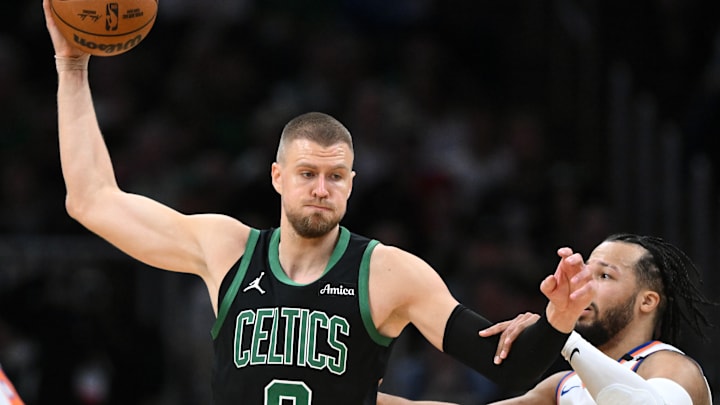Onsi Saleh and the Atlanta Hawks front office made headlines Tuesday night when they acquired Kristaps Porzingis from the Boston Celtics in a three-team trade. The Boston Celtics received Georges Niang and a second-round pick. The Brooklyn Nets received Terance Mann and the Hawks' 22nd first-round pick in the 2025 NBA Draft.
Acquiring Porzingis immediately improves the Hawks' interior defense while also giving them another PF/C who can stretch the floor, which is an excellent skillset to have alongside Hawks centerpiece Trae Young. From November to February, he played at an All-Star level as the Celtics' third option, grabbing multiple double-doubles and consistently producing 20+ points nightly.
He shot 41.8% from three, while averaging 19.5 points, 6.8 rebounds, and 1.5 blocks after playing 42 games this season. Unfortunately, he was in and out of the lineup due to an upper respiratory illness. Thankfully, he didn’t suffer any major foot or knee issues, which spiked during his tenures with the Dallas Mavericks and Washington Wizards from 2019 to 2022.
Hawks fans are hopeful that he remains healthy enough to make an impact next season, and the most interesting component of the trade is the impact this will have on Hawks center Onyeka Okongwu. The former 6th overall pick finally became the starting center last season after learning from 11-year veteran Clint Capela during his first five years in the league.
Now, Quin Snyder must decide which one should hold the starting spot heading into the 2025-2026 season. Choosing between a homegrown product that had a breakout year or a solidified NBA champion leaves an interesting puzzle to solve.
How trade for Kristaps Porzingis Affects Onyeka Okongwu
Both centers have their pros and cons that affect the Hawks in different ways. Okongwu has a smooth touch around the rim and supreme athleticism that makes up for his height disparity against 7-footers. Unfortunately, he continues to be criticized for being an undersized center at 6’9.
There have been instances where his height resulted in a missed rebound or an uncontested shot attempt during pivotal moments. Nonetheless, he has risen to another level, and the league witnessed it during his 28-point performance in the Play-In Tournament finale. Porzingis fixes many of these issues, and the 7’2 PF/C is a more consistent shooter than Okongwu.
His health issues will always be a factor, but his impact when present can not be ignored. Porzingis played 40+ games per season the last three years, and the former All-Star had a positive net rating of 9.8 during his Celtics tenure. He played in 99 out of 182 games for the Celtics across two seasons and was essential to their championship run in 2024.
The biggest positive about the acquisition is that it gives the Hawks 48 minutes of good center play. Capela’s regression began during the 2021-22 season, and at 31 years old, his best years are behind him.
Selecting the starting center is an excellent problem for Hawks head coach Quin Snyder to have, and the beauty of the trade is their ability to play with each other. Porzingis excels at his natural position of power forward, and Okongwu thrives in a five-out lineup as the center. Both of them can spread the floor with three-point shooting and are proven defenders with substantial length.
On paper, they complement each other well, but Okongwu will likely start at the beginning due to his durability. For now, their pairing is considered an ‘experiment’ because Porzingis has one year remaining on his original contract with the Celtics. It gives Saleh time to see how the centers pair and move on quickly if Porzingis is detrimental to their success.
